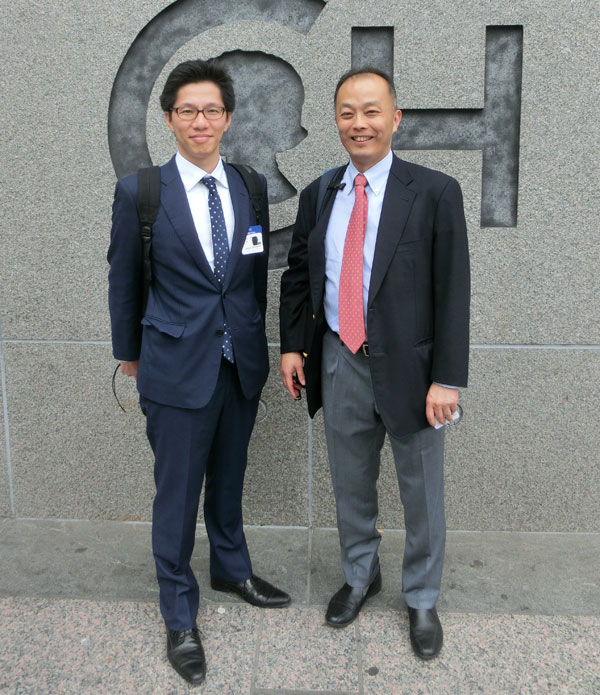
L-R: Yoshiki Kawamura, Tetsushi Yoshikawa
Tetsushi Yoshikawa, Chair of the Department of Pediatrics at Fujita Health University in Japan and his associate Yoshiki Kawamura joined with experts at the National epilepsy Center in Japan to study 75 patients with refractory epilepsy, with and without sclerosis. The study was published in Journal of Infectious Diseases, with an accompanying commentary by Steve Jacobson of NINDS.
They found evidence suggesting that HHV-6B plays a pathogenic role in epilepsy by enhancing gene expression that induces neuroinflammation and sclerosis in the temporal lobe. HHV-6 DNA levels were significantly higher in the resected tissue of epilepsy patients with sclerosis compared to those without it. Furthermore, a pro-inflammatory chemokine, monocyte chemotactic protein-1 (MCP-1) was significantly increased in HHV-6 positive compared to negative brain samples.
MCP-1 recruits monocytes, memory T-cells and dendritic cells to sites of inflammation initiated by tissue injury or infection. MCP-1 is upregulated in glial cells in a number of conditions such including epilepsy, ischemia, Alzheimer’s and brain injuries. This protein is also known as chemokine (C-C motif) ligand 2 (CCL2).
Glial fibrillary acidic protein (GFAP), was also upregulated in the HHV-6 positive samples. GFAP is believed to play a role in scarring, and it is used as a marker of neurologic damage in epilepsy brain tissues as well as in the tissues of adults who suffer from strokes or brain injuries.
The authors found a statistically significant correlation between HHV-6 viral loads and the expression of MCP-1 (p= .033) and GFAP (0.001) and propose that HHV-6 induced expression of MCP-1 may accelerate astrogliosis and neuronal loss. They also suggest that since HHV-6 can latently infect monocytes and macrophages, the MCP-1 upregulation might accelerate the migration of HHV-6 infected cells.
The group tested for all of the human herpesviruses in resected tissues from the amygdala, hippocampus and uncus. HHV-6 was by far the most common virus found with 14 out of 51 (27%) of sclerotic hippocampus samples positive for HHV-6, compared to 1 out of 15 or 6.6% of the samples without sclerosis. In the amygdala and uncus, 14 out of 40 (35%) of samples were positive for HHV-6 compared to 3 out of 23 (13%) in samples without sclerosis. HHV-7 was the second most common virus with 4 samples positive, three from samples with sclerosis. None of the other herpesviruses were found in significant numbers.
Although no sign of active infection or HHV-6 mRNA was found, the authors plan further studies. The authors note that this data does not rule out the possibility that HHV-6 reactivated in the past, at the time of the seizures. Previous studies have found lytic proteins in these MTLE tissues, suggesting that the virus had been replicating (Fotheringham 2007, Li 2011).
Earlier this year a German group published a report on a large study of 346 frozen MTLE samples and found that 15% of samples from patients with a history of either febrile seizures or meningoencephalitis were positive for HHV-6B. Although they also found HHV-6B in a comparable percentage of control tissue, the viral load in the epilepsy group was significantly higher (p=.001) (Esposito 2015).
Also, a Chinese group recently found that MTLE patients positive for ApoE4 have a higher viral load in their resections than those who are negative (Huang 2015). Earlier, the same group found that NF-kB was upregulated in HHV-6B infected tissues. (Li 2011)
For more, read the full paper.
See related interview with Tetsushi Yoshikawa on treating HHV-6B induced seizures

